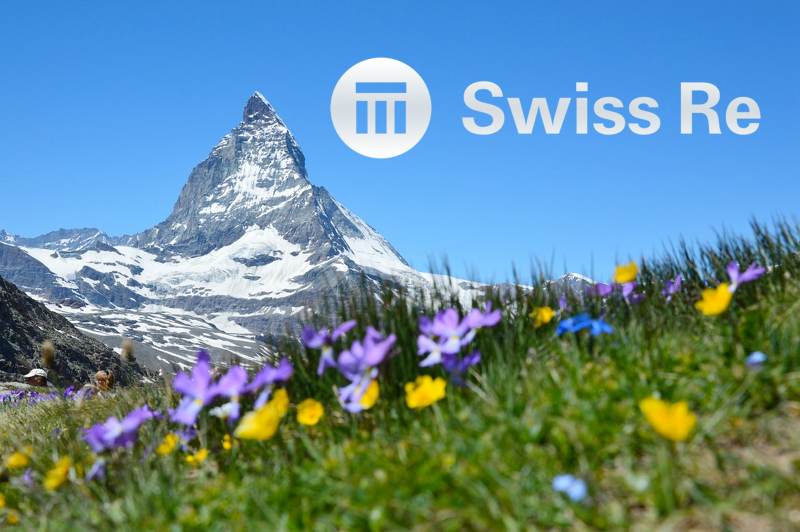Swiss Re gets $1.15bn stop-loss cover in hybrid cat bond / loan transaction

Swiss Re has completed a landmark hybrid bank financing and insurance-linked securities (ILS) transaction, utilising its Matterhorn Re Ltd. special purpose insurer to issue catastrophe bond notes alongside a loan arrangement with J.P. Morgan, to secure $1.15 billion of all-lines of business stop-loss financing and protection from the capital markets.
The transaction demonstrates Swiss Re’s innovative approach to bringing new and alternative capital in to support its businesses protection and growth needs, tapping both traditional banking sources and institutional investors focused on insurance-linked securities (ILS) and catastrophe bonds at the same time.
The transaction will provide Swiss Re with multi-year reinsurance and retrocessional protection against severe underwriting losses, covering underwriting risks across the entire Swiss Re Group.
The reinsurer said the arrangement will supports its growth opportunities in an attractive reinsurance market.
Swiss Re’s Group Chief Financial Officer John Dacey, commented on the issuance, “The innovative partnership is a great example of how the Group considers all sources of capital holistically and aims to further enhance its flexible capital structure.
“With this transaction, the Alternative Capital Partners division delivers another material contribution to Swiss Re’s efficient capital management.”
Swiss Re is using its Matterhorn Re Ltd. special purpose insurer (SPI) based in Bermuda to facilitate this transaction, with the structure having established a new segregated account named Argon, and also a new Principal At-Risk Variable Rate Notes Program for this new segregated account, for the purposes of issuing a series of notes to ILS focused institutional investors that backed the stop-loss deal.
Investment bank J.P. Morgan has provided US $1 billion in financing via a senior loan, that runs through the new Matterhorn Re segregated account named Argon.
At the same time, various institutional investors are participating in the arrangement via a US $150 million investment in junior insurance-linked notes that have now been issued by the Matterhorn Re Argon segregated account, which is more akin to a catastrophe bond arrangement.
As a result, a $150 million tranche of Series 2022-1 Class A Principal At-Risk Variable Rate Notes have been issued by Matterhorn Re Ltd. on behalf of its new Argon segregated account.
We’ve added this new $150 million ILS arrangement from Swiss Re to our Deal Directory under the listing Matterhorn Re Ltd. (Argon 2022-1).
While the loan arrangement with J.P. Morgan has also run through the Matterhorn Re SPI and is undoubtedly an insurance-linked investment, we aren’t classifying this as akin to the catastrophe bonds and related ILS reinsurance arrangements we feature in our Deal Directory and charts of the market.
The $150 million of Class A Argon notes, which have a due date of January 25 2027 and so are particularly long-dated for a catastrophe bond, were privately placed with the group of institutional investors.
Swiss Re said the $1.15 billion stop-loss cover it benefits from with this transaction runs across the 2022 to 2026 underwriting years, which explains the maturity date of the Argon ILS notes being in January 2027.
The reinsurer told Artemis that the underlying transaction is structured as a multi-year whole account stop-loss of its group wide underwriting results, with a trigger based on the economic result of each individual financial year, so the cat bond component is akin to an indemnity trigger.
So with severe underwriting loss protection across five concurrent financial years, Swiss Re has found an innovative way to tap capital market appetite for exposure to insurance risks and secure a capital source contingent on its underwriting results.
In addition, Swiss Re expects the transaction will have a positive benefit for its ratings and regulatory capital requirements.
Philipp Rüede, Swiss Re Head of Alternative Capital Partners, also said, “Through Alternative Capital Partners’ expertise and strong relationships, we have been able to structure this first-of-its-kind hybrid transaction, bringing together bank financing and insurance-linked securities markets.
“In doing so, we have leveraged the complementary nature of the two sources of capital in a landmark transaction within the reinsurance and ILS markets.
“It is another example of Swiss Re’s long tradition of innovation in the alternative capital space and underscores the strength of its franchise.”
The transaction is fully collateralised and the proceeds are being held in notes issued by the European Bank for Reconstruction and Development, which has Aaa/AAA/AAA (Moody’s/S&P/Fitch, all stable) ratings, Swiss Re noted.
This transaction provides broad reinsurance protection to Swiss Re, securing a contingent source of capital that can be triggered by severe underwriting losses across all its underwriting books. An effective cover for a giant global reinsurer that has been targeting growth in recent years.
In the past we’ve seen contingent capital arrangements that have served a similar purpose from large reinsurance companies, but nothing that has enabled the tapping of efficient capital to this degree, except perhaps for the Lloyd’s Central Fund deal of 2021.
Tapping broader capital market appetite for insurance-linked returns in this way secures Swiss Re protection and growth capital in one swoop, while offering capital efficiency benefits and the long-term nature of the arrangement will also be beneficial for its planning capability in what is a growth market.
We’ve listed the insurance-linked securities (ILS) component in our extensive catastrophe bond and related Deal Directory, as Matterhorn Re Ltd. (Argon 2022-1).






